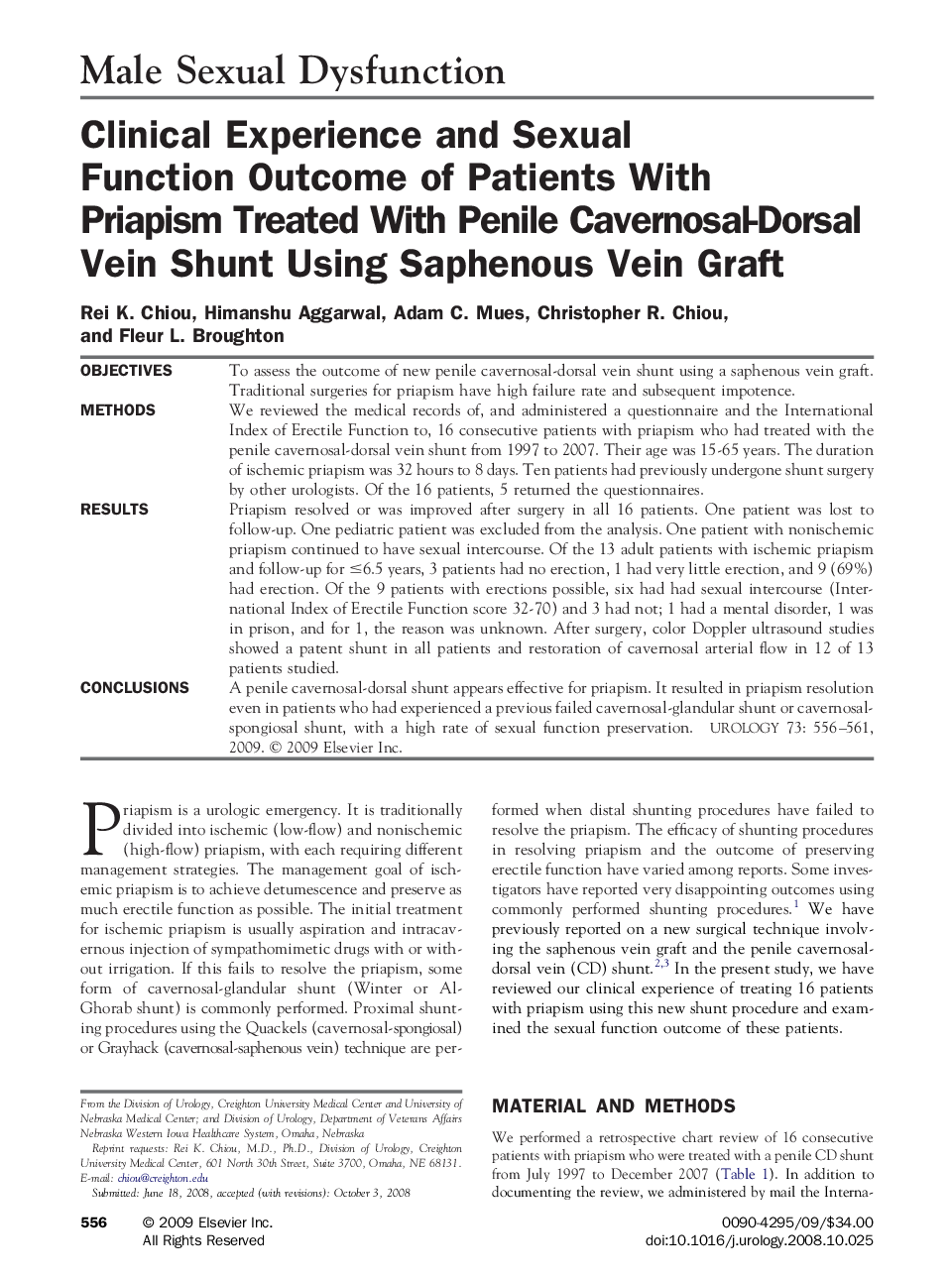| Article ID | Journal | Published Year | Pages | File Type |
|---|---|---|---|---|
| 3901504 | Urology | 2009 | 6 Pages |
ObjectivesTo assess the outcome of new penile cavernosal-dorsal vein shunt using a saphenous vein graft. Traditional surgeries for priapism have high failure rate and subsequent impotence.MethodsWe reviewed the medical records of, and administered a questionnaire and the International Index of Erectile Function to, 16 consecutive patients with priapism who had treated with the penile cavernosal-dorsal vein shunt from 1997 to 2007. Their age was 15-65 years. The duration of ischemic priapism was 32 hours to 8 days. Ten patients had previously undergone shunt surgery by other urologists. Of the 16 patients, 5 returned the questionnaires.ResultsPriapism resolved or was improved after surgery in all 16 patients. One patient was lost to follow-up. One pediatric patient was excluded from the analysis. One patient with nonischemic priapism continued to have sexual intercourse. Of the 13 adult patients with ischemic priapism and follow-up for ≤6.5 years, 3 patients had no erection, 1 had very little erection, and 9 (69%) had erection. Of the 9 patients with erections possible, six had had sexual intercourse (International Index of Erectile Function score 32-70) and 3 had not; 1 had a mental disorder, 1 was in prison, and for 1, the reason was unknown. After surgery, color Doppler ultrasound studies showed a patent shunt in all patients and restoration of cavernosal arterial flow in 12 of 13 patients studied.ConclusionsA penile cavernosal-dorsal shunt appears effective for priapism. It resulted in priapism resolution even in patients who had experienced a previous failed cavernosal-glandular shunt or cavernosal-spongiosal shunt, with a high rate of sexual function preservation.
